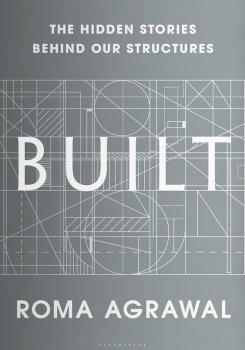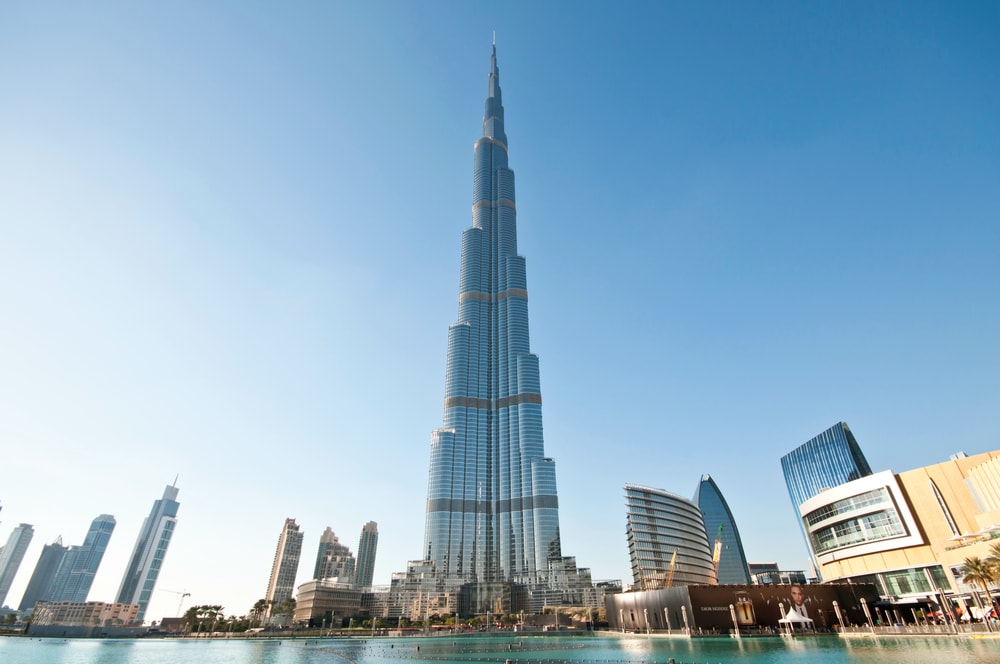Meet The Father Of Modern Skyscrapers
The Burj Khalifa is the tallest building in the world—but the design techniques that make it possible are more than a century old.

Built: The Hidden Stories Behind Our Structures
The following is an excerpt from Built: The Hidden Stories Behind Our Structures by Roma Agrawal.
I was reminded of Elisha Otis during my visit to the Burj Khalifa in Dubai, the world’s tallest building (at 829.8m), because his company installed the elevators that were about to take me to the observation deck on the 124th of its 163 floors. It was a more serene journey than my trip up the outside of the tallest tower in Western Europe in a cage-like hoist, although the floor number on the LCD display changed with a bewildering rapidity as we ascended at 36km/h.
(Elisha Otis’s original elevator in the E.V. Haughwout Building climbed at just over 0.7km/h.) A minute later I emerged to an unparalleled view. On one side, pure sand extended beyond the buildings to the horizon. On the other, I could see the blue sea and, far away to the left, the cluster of man-made islands that form the famous leaf shape of the Palm Jumeirah. Steeling myself, and feeling protected by the floor-to-ceiling glass, I ventured closer to the edge and looked down. Beneath me were a number of tiny, futuristic-looking buildings, like scale models on the set of a sci-fi film. It was a shock to realise that these structures are actually taller than most of the skyscrapers in Europe, and many even in the US. The Burj Khalifa dwarfs everything around it, and plays havoc with your sense of proportion.
‘Megatall’ skyscrapers like the Burj Khalifa were made possible by a man who started life as a mischievous and lively-minded young boy, born in Dhaka, Bangladesh, in April 1929. Fazlur Khan disliked traditional schooling methods: his inquisitive methods were met with stern responses from teachers; as a result, he didn’t take education very seriously (even though his father was a mathematics teacher). Fortunately, his patient, forward-thinking dad realised that his son needed a broader education, and was determined to further his intellectual curiosity while fostering a sense of discipline. He set Fazlur problems similar to those in his school homework, but which made the boy consider solutions far beyond what they homework asked for; he also challenged him to solve the same problem from multiple perspectives. When the time came for Fazlur to choose whether to study physics or engineering at university, his father guided him towards the latter because, he said, it demanded disciple and would require him to wake early for lectures. (In fact, as I can attest, a physics degree involves a lot of early-morning lectures too.) Khan gained a degree in civil engineering at Dhaka University in 1951, finishing first in his class, and went to the US on a Fulbright Scholarship in 1952. In the next three years he acquired two master’s degrees and PhD, while also learning French and German.
[Chocolate is just *choc* full of science.]

It was Khan who came up with the idea of putting a building’s stability system on the outside—a brilliant innovation that has since been used on iconic structures around the world, from the Centre Pompidou and the Gherkin to the Hearst and Tornado Towers. Using large pieces of diagonal bracing to form strong triangles, Khan created a stiff external skeleton, effectively turning traditional skyscrapers inside out. This system is often called a ‘tubular system’ because, like a hollow tube, the outside ‘skin’ of the structure gives it strength, although the shape of the skin doesn’t have to be cylindrical.
Khan’s first commission to employ this concept was the DeWitt-Chestnut apartment building in Chicago. But the real showcase for his novel approach was the completion in 1968 of the city’s John Hancock Center which, at 100 stories (344m), became the second-tallest skyscraper in the world after the Empire State Building. It is a rectangular cuboid with gently tapering faces, making it narrower at the top than at the base. On each face you can see five giant ‘Xs’, one on top of the other, that form the bracing for the tower. Fifty years on, its eye-catching design still looks modern and elegant. The pioneering design earned Khan the catchy title ‘father of tubular designs for skyscrapers.’
Excerpted from Built: The Hidden Stories Behind Our Structures by Roma Agrawal. Copyright Roma Agrawal 2018 ©. Published by Bloomsbury. Used with permission.
Roma Agrawal is a structural engineer and author of Built: The Hidden Stories Behind Our Structures (Bloomsbury USA).